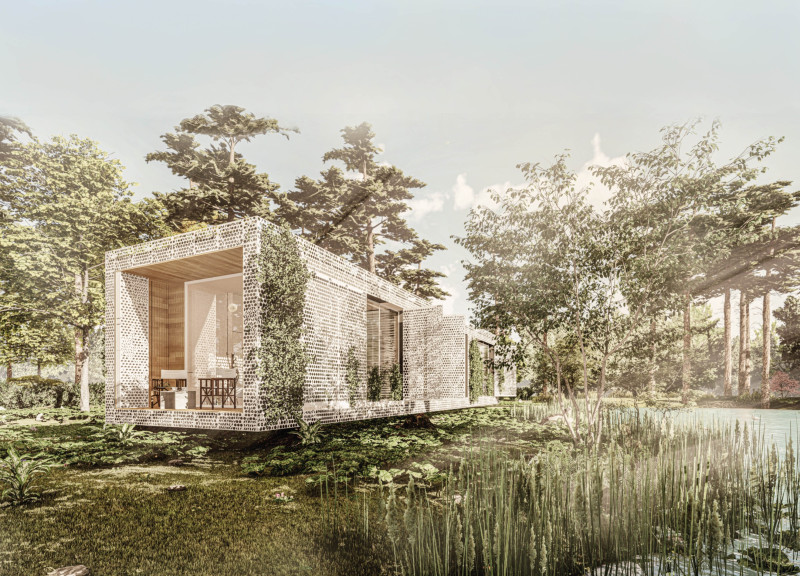5 key facts about this project
The Eco Modular House addresses the need for sustainable living solutions in urban areas. With a focus on creating a balance between residents and their environment, the design responds to challenges posed by population growth and resource scarcity. The project embodies the idea of “Less is more & More in Less,” which emphasizes reducing resource consumption while maximizing the use of space through flexible configurations.
Modular Design Flexibility
At the center of the Eco Modular House is its modular design, which allows for versatile living arrangements. Each module is equipped with hidden functionalities that enhance how space is used, enabling adaptations to different needs over time. Features like foldable beds, televisions, and dining tables are integrated within the modules, showcasing a creative approach to compact living. This flexibility is essential in cities where space is often limited.
Sustainable Features and Energy Independence
Sustainability is a key aspect of the Eco Modular House. The inclusion of green roofs and façades improves energy efficiency by allowing for rainwater collection while providing additional insulation. Photovoltaic panels and solar thermal collectors are crucial elements in achieving energy independence, enabling the building to produce renewable energy to meet its requirements. This focus on sustainable energy methods sets the Eco Modular House apart in modern residential design.
Water Management and Biodiversity
Effective water management is also a priority in the Eco Modular House. Systems for reusing greywater help repurpose water for irrigation and toilet use, enhancing water efficiency. The design encourages biodiversity through the addition of green spaces for gardening. These areas can grow fruits, vegetables, and herbs, which benefit both residents and local wildlife. This integration of nature into the living environment supports ecological health and promotes sustainable practices.
Structural Portability and Resilience
The structure emphasizes portability while ensuring stability. The use of lightweight, reusable materials allows for easier transport and assembly, aligning with environmentally friendly construction methods. Special considerations have been made for communities in flood-prone regions, leading to a design that can float and adapt to rising water levels. This thoughtful engineering addresses potential climate challenges effectively.
Materials such as polished mirror stainless steel and birch plywood create interesting visual connections to the surroundings. High-insulation sandwich panels contribute to maintaining a comfortable living environment by enhancing thermal performance. The overall design reflects a commitment to functionality and sustainability, resulting in a cohesive and practical living solution.






















































